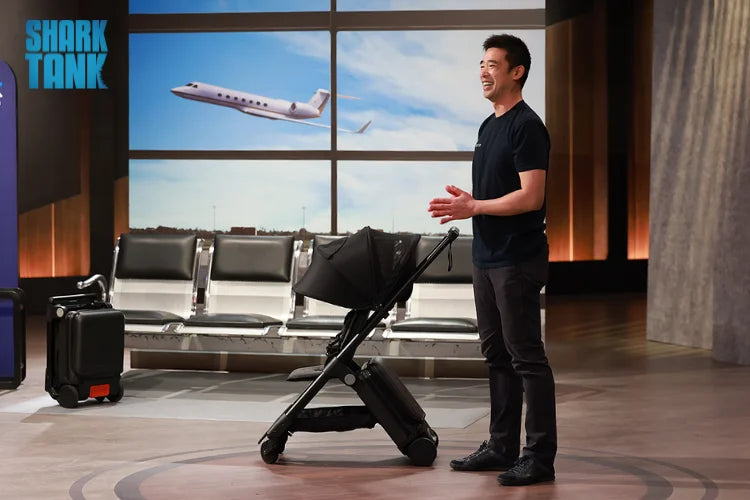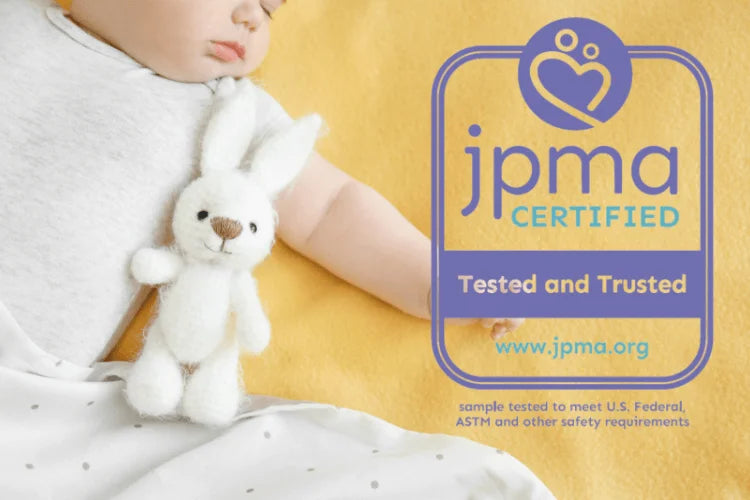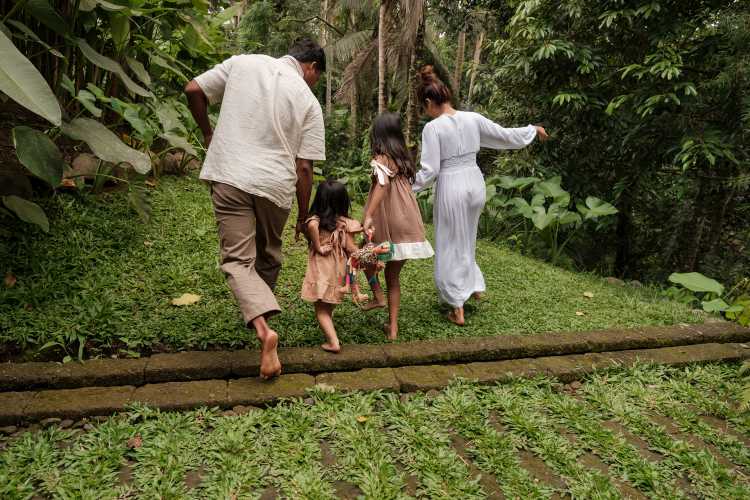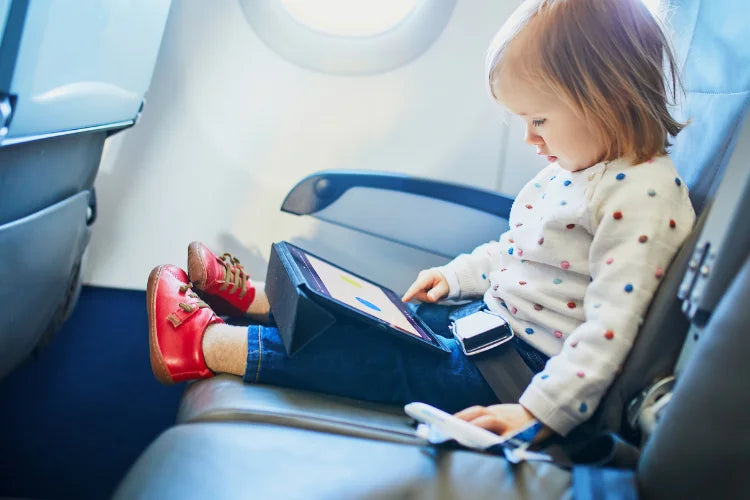When you’re babywearing, comfort and safety go hand in hand. A good carrier makes life easier. It keeps your baby close while freeing up your hands for everything else that parent life demands. But it’s just as important to make sure your baby is sitting in the carrier the right way. There are various baby carrying positions, and the right one depends on your baby's age, baby's weight, and developmental stage.
Here’s how to tell if your baby is positioned safely, securely, and comfortably every time. Different styles of carriers support different baby carrying positions, so understanding these options helps ensure your baby is in the carrier correctly.
Introduction to Baby Carriers
Baby carriers are a practical and nurturing way to keep your baby close while supporting their healthy development. Designed to promote bonding and provide hands-free convenience, baby carriers come in a variety of styles, including wraps, slings, and soft-structured carriers. Each type offers unique benefits, but all are intended to support your baby’s natural posture and encourage healthy hip positioning. When choosing a baby carrier, it’s important to consider your child’s age, size, and weight to ensure a safe and comfortable fit.
The right carrier can help reduce crying, foster a strong connection between you and your baby, and make everyday activities easier for both of you. Whether you prefer the simplicity of a sling or the structure of a soft carrier, always prioritize your baby’s comfort and safety.
Why Positioning Matters
A well-fitted carrier supports your baby’s hips, spine, and neck, and keeps their airways clear, providing essential support for the baby's spine. It also makes babywearing more comfortable for you, spreading your baby’s weight evenly so you can move naturally without strain.
According to the International International Hip Dysplasia Institute, following ergonomic babywearing guidelines helps promote healthy hip development and reduces the risk of hip dysplasia by ensuring your baby’s hips are in the spread squat or 'M' position.
When your baby is in the correct position, they can breathe easily, see the world from a safe and cozy spot, and settle more quickly against your heartbeat. That’s the magic of babywearing done right.
Quick Signs Your Baby Is in the Right Position
You can do a quick mental check every time you babywear. Here’s what to look for:
-
Airway is clear – Your baby’s chin should never be pressed against their chest. Leave at least a finger width of space under the chin.
-
You can see their baby's face – You shouldn’t have to move fabric to check on them.
-
Close enough to kiss – Their head should rest high enough on your chest that you can easily kiss the top of it.
-
Supported back – Their back should have a natural curve, not slumped or leaning away, and the baby's head should be supported.
-
Legs in the “M” shape (spread squat position) – Knees higher than the bottom, forming a wide-leg squat. This supports healthy hip alignment, with the baby's thighs supported and hips bent.
-
Snug fit – The carrier should feel firm and supportive without being tight or restrictive.
If all these feel right, your baby is likely in a safe, ergonomic position that supports both comfort and connection.
Remember the T.I.C.K.S. Rule
If you’re ever unsure, use this easy checklist to position your baby safely. The T.I.C.K.S. rule is the gold standard for safe babywearing:
-
Tight – The carrier should hold your baby close, not loose or sagging.
-
In view at all times – You should always be able to see your baby’s face.
-
Close enough to kiss – You can easily kiss the top of their head.
-
Keep chin off the chest – Their airway should always stay open.
-
Supported back – Your baby’s back should be upright and well-supported to ensure baby is secure and comfortable.
It takes just a few seconds to run through, and gives you peace of mind for hours, helping ensure baby is safe and comfortable.

Common Mistakes Parents Make
Even experienced parents adjust their carriers from time to time. These are the little things to watch for:
-
Wearing the carrier too low
-
Baby’s head tilting forward without support
-
Fabric wrapped too loosely (causing slumping)
-
Overdressing your baby, they stay warm against you
-
Using a carrier that’s not suitable for your baby’s size, age, or for low birth weight infants
-
Ignoring your own comfort, any shoulder or back strain means something’s off
If your baby seems unsettled or you feel uneven pressure, take a quick break and readjust. The way your baby is carried can affect their comfort and safety, so it’s worth it for both of you.
Choosing the Correct Baby Carrier
Selecting the right baby carrier is essential for both your comfort and your baby’s safety. Start by considering your baby’s age, weight, and size, as these factors determine which carriers are suitable. For young babies, an inward-facing position is recommended to provide the necessary head and neck support, while older babies who have developed good head control can enjoy outward-facing options.
Look for a baby carrier with padded shoulder straps and adjustable settings to ensure a secure fit as your baby grows. Make sure the carrier’s weight limit matches your baby’s current weight, and always check that it meets international safety standards. If you’re unsure which carrier is best for your needs, consult a healthcare professional or a babywearing expert to help you find the right baby carrier for both you and your little one.
Safety Tips for Different Carrier Types
Every carrier type has its own best-practice setup. Different styles of carriers, including baby slings, require specific safety practices to ensure the well-being of both the caregiver and the child. Baby wearing and infant carrying practices can vary depending on the carrier type, so it is important to understand the unique safety guidelines and developmental considerations for each method.
Wraps and Ring Slings
Make sure the fabric supports your baby from neck to knee. Keep it snug enough so their head doesn’t fall forward, and their nose and mouth stay visible. For the first six months, the jockey position is recommended to support healthy hip development and ensure your baby faces you for social engagement. For newborns, always keep them upright in the M-position. The cradle position can be used in certain situations, but always make sure your baby's face remains visible and unobstructed.
Soft Structured Carriers
Adjust the waistband and shoulder straps, ensuring proper lumbar support, so your baby sits high and close to your chest. For infants, the recommended carrying position is facing inwards, which provides safety, comfort, and developmental benefits. Once they’re older and have good neck and trunk control, you can switch to the facing outwards carrying position or back carry modes.
Onbuhimo and Meh Dais
These carriers are great for older babies who can sit up unassisted. They are also suitable for hip carry and hip carrying, allowing your child to enjoy a natural side position and better interaction during short trips or casual wear. Keep the back panel flat and supportive, with knees higher than hips. Spread out the straps so your shoulders carry the weight evenly. However, while these carriers are convenient, hip carrying may not be comfortable for long periods.

Emotional Benefits of Babywearing
Babywearing is about more than just convenience, it’s a powerful way to nurture your baby’s emotional well-being. Keeping your baby close to your chest provides a sense of security and comfort, helping to reduce stress and anxiety for both babies and parents. The close contact encourages bonding, making it easier to respond to your baby’s needs and cues, especially during those early months. For parents, babywearing can boost confidence and foster a deeper connection with their child, while also supporting mental health by reducing feelings of isolation or overwhelm. The simple act of carrying your baby close can make a big difference in how both you and your baby experience those precious first months together.
Combining Baby Carriers and Strollers
For busy families, combining baby carriers and strollers offers the best of both worlds. Baby carriers are perfect for quick errands, crowded places, or when you want to keep your baby close and comforted. For longer outings or when your baby needs a nap, switching to a stroller can provide extra comfort and convenience. When choosing a stroller, look for features like adjustable settings, ample storage, and a comfortable seat to keep your baby happy during longer trips. By using both baby carriers and strollers, you can adapt to any situation, ensuring your baby’s comfort and safety whether you’re on a short walk or a day-long adventure.
Check out TernX stroller for city adventures. If you're unsure how to fly with a stroller, read this blog here.
How to Know If Your Baby Is in the Carrier Correctly
When you wear your baby carrier correctly, you’ll know it. Your baby will look comfortable, breathe easily, and settle in close. You’ll feel balanced, supported, and confident to move about your day.
Whether you’re catching a flight, strolling through the park, or running errands, take a moment to check the T.I.C.K.S. rule before you go. Following these tips will help keep your baby safe, and safe babywearing makes every journey a little more peaceful for you and your little one.














